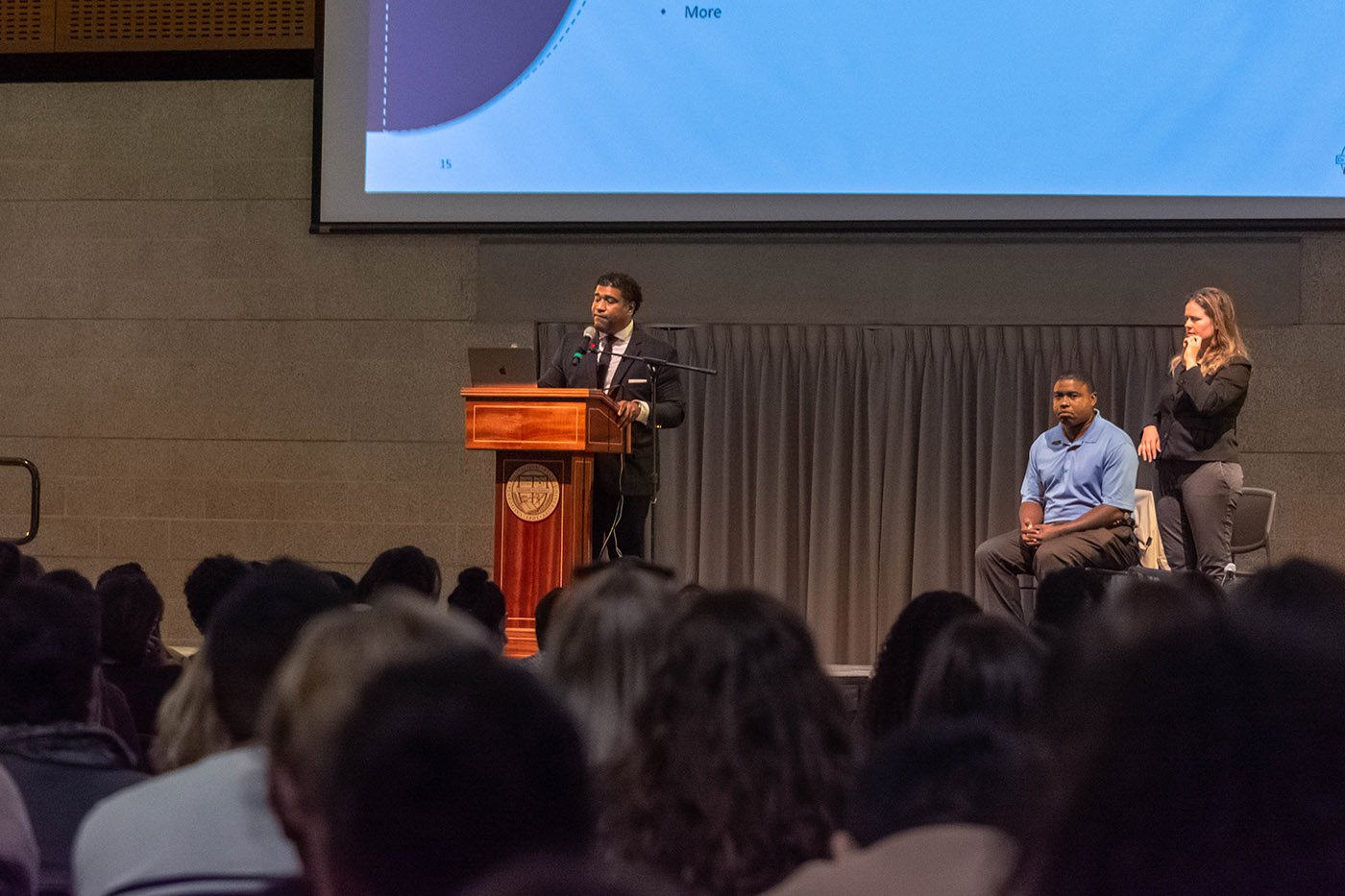Olivia Peluso is an English senior and Mustang News opinion editor. The views expressed do not necessarily reflect those of Mustang News.
Thursday, the heavily anticipated Cal Poly Experience (CPX) Survey results were released, and diversity expert Damon Williams wrapped up his $243,000 partnership with Cal Poly with the conclusion that life on campus is more difficult for minority groups. It’s a little shocking that the university would spend a quarter of a million dollars to restate and rephrase the obvious: that Cal Poly does, and has historically, struggled with diversity and inclusion.
We’ve heard those words over and over again in seminars, mission statements, chain emails from department heads, and on syllabuses each quarter. But what do these words mean to a predominantly (and notoriously) white campus? Clearly, not enough. Cal Poly does an awesome job of promoting diversity and inclusion, but I’ve seen little action.
Williams undertook an incredibly ambitious project when he was hired to study the campus climate and I am in no way trying to criticize his efforts. I do, however, doubt the survey is a sufficient resolution to a problem so pervasive. It is evident, and has been evident, that Cal Poly deeply struggles with diversity and inclusion as a whole (need I reference another racially insensitive party theme that surfaced just last week?).
While I hope that people who have acted in outright hateful ways learn, I fear that the CPX survey will not actually change the minds and behaviors of those whose deserve to be rightfully adjusted. If anything, the survey should be used as a wake-up call to those, like myself, who personally consider themselves to be inclusive.
If anything, the survey should be used as a wake-up call to those, like myself, who personally consider themselves to be inclusive.
According to the survey, even though the vast majority of individuals here at Cal Poly think of themselves as good-hearted and inclusive people, minority groups struggle through their experience here. This discrepancy is the amassed product of outright acts of racism, lingering social and cultural differences, micro-aggressions, naïveté, and ultimately, passivity. While I see individuals all around me who wholeheartedly embrace others regardless of race, ethnicity, religion and sexuality, perhaps a blanket neutrality is not a sufficient effort. More active, tangible steps must be taken by all of us, not just administration.
Those who consider themselves inclusive may not lump themselves into the problem when the face of the problem often takes the shape of larger and more outright acts of aggression, like blackface or hateful comments scribbled on the free speech wall. However, while these issues are huge and hurtful, they do not dictate the day-to-day campus climate. Perhaps the largest challenge is recognizing we all could do better.
Perhaps the largest challenge is recognizing we all could do better.
For the sake of Cal Poly, Damon Williams, and most importantly, for the sake of our minority students, faculty, and staff, I hope the survey translates into tangible growth and change. In winter 2020, the results of the CPX Survey will be used to create action plans detailing steps for the next five years. However, the issue cannot wait that long to be addressed. It’s up to us as a student body to actively expand our social and academic horizons now so that everyone on campus feels welcome in this community and comfortable to express and prosper, let alone exist.

